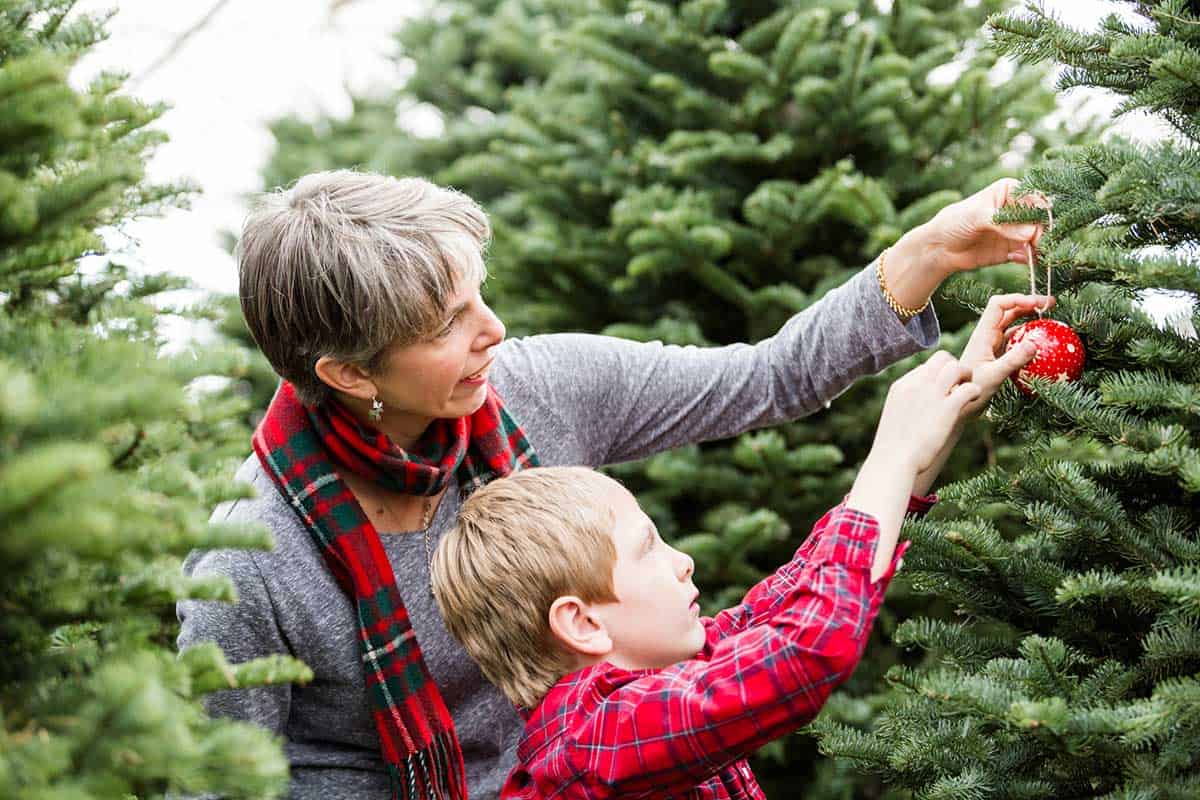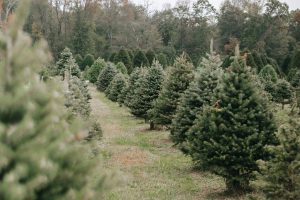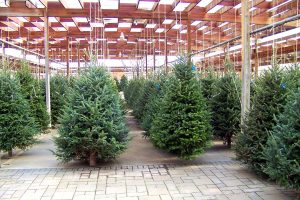This page may contain affiliate links. If you click and buy, we might get a small commission at no cost to you.
Every year millions of Christmas trees are sold during the holiday season. Christmas tree production is a huge business that also raises a lot of questions. For instance, how long does it take to grow a Christmas tree? And are they easy to grow yourself? Find out answers to these questions and more. You might be surprised how long it actually takes!
How long does it take to grow a Christmas tree?
On average, it takes around 6 to 9 years for a Christmas tree to grow to a height where it can be sold for the holidays. This means tree farmers have to plan years in advance before having a crop of trees that can turn a profit. However, the length of time varies by the type of tree.
Some trees take only 4 years to reach 6 to 7 feet, while others take up to 15 years. For example, the Canaan fir (Abies balsamea var. phanerolepies) grows at a rate of 1 to 2 feet per year. In contrast, the Douglas fir (Pseudotsuga menziesii) will grow 2.5 to 3.5 inches in its first year and around 3 feet per year after the 8th to 10th year. It can take up to 10 years before it reaches an adequate size for selling.
What’s the fastest growing Christmas tree?
The Leyland cypress (Cupressocyparis x leylandii) is one of the fastest-growing trees used for Christmas trees. It can grow up to 4 feet in height per year and 2 to 3 feet in width. With proper care, they can grow up to 100 feet tall. They are one of the most popular trees in the southern states and do well in plant hardiness zones 6 to 10.
How big can Christmas trees grow?
While their maximum height wouldn’t fit in your living room for Christmas time, fir trees are among the tallest Christmas trees if left in the wild without cutting them. Douglas firs can grow up to 330 feet tall and the grand fir (Abies grandis) and noble fir (Abies procera) can grow up to 230 feet tall.
Are Christmas trees easy to grow?
Christmas trees are relatively easy to grow. However, they do require maintenance and year-round care. Depending on the type of tree you have, you’ll want to make sure the tree is planted in soil with the right pH range and drainage for it to thrive. You also need to shear or trim your Christmas trees every year to ensure they have the cone shape we are used to seeing during the holidays. Pruning the trees also helps remove any unhealthy branches.
Additionally, Christmas trees are known to be affected by diseases and pests, including weeds that impact the lower branches. To avoid such issues, you’ll want to use herbicides, monitor your trees, and prep the ground properly before planting.
How do you grow your own Christmas tree?
Before you go about growing your own Christmas tree, you first have to select the right type of tree. Simply choosing a species that grows fast won’t be any good if the tree can’t thrive in your region. You’ll want to check what plant hardiness zone you are in and select a tree based on your zone. For example, firs grow better in higher elevations and cooler regions, such as zones 4 to 6. In contrast, pines can typically grow in the hotter climates of zone 7 to 10.
It’s also best to first plant your tree seedling in a pot before transferring it outside. Once it’s big enough to be planted outdoors, find a good location with the right soil and sunlight the species needs before digging a hole to place your plant in. Cover the hole, gently tap the ground, and make sure to water your tree, especially during hotter months or droughts.
What are common Christmas trees?
Whether you want to grow your own tree for the holidays or are simply curious what live tree to buy, here are just a few examples of the most popular Christmas trees, including their growing zones and growth rates:
1. Arizona cypress
Scientific name: Cupressus arizonica
Growing zones: 7 to 9
This tree thrives in dry, warm conditions with lots of sunshine. It’s a popular tree due to its bluish-gray foliage and growth rate of 1 to 2 feet per year. If left uncut, it can reach heights of 40 to 50 feet.
2. Balsam fir
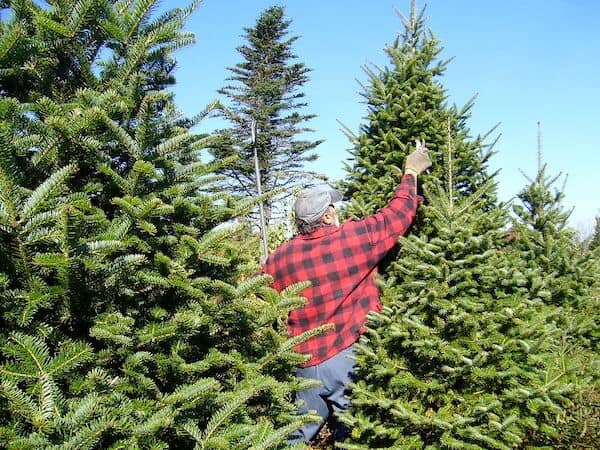
Scientific name: Abies balsamea
Growing zones: 3 to 5
The balsam fir is popular in the northern areas, since it thrives in cooler climates and moist soils. It grows around a foot per year and has highly fragrant needles used for making scented holiday gifts.
3. Colorado blue spruce
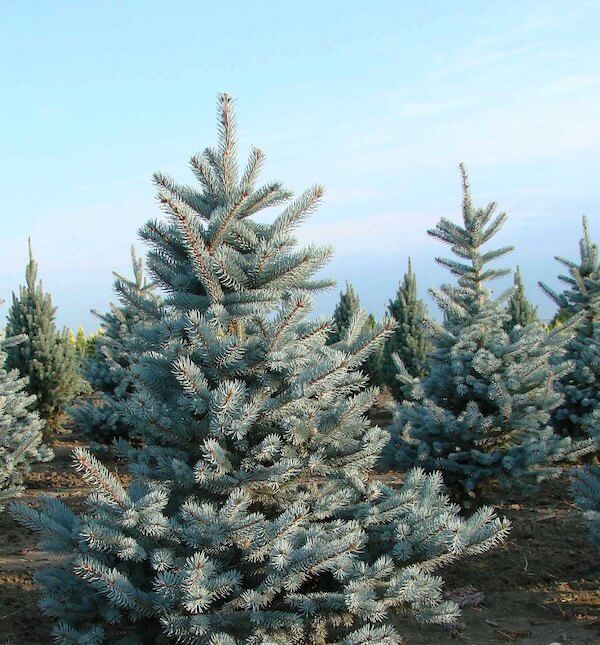
Scientific name: Picea pungens
Growing zones: 2 to 7
The silvery-blue color of the needles of the Colorado blue spruce makes it a sought-after tree. It also adapts well to different soils and requires little to no pruning. Expect a growth rate of 1 to 2 feet per year.
4. Red cedar
Scientific name: Juniperus virginiana
Growing zones: 2 to 9
Red cedars are popular in the deep south since they can thrive in the hot and humid summer months. They grow around a foot a year, have blue berry-shaped cones, and a unique cedar aroma.
Conclusion
Christmas trees take longer to grow than some people assume. On average it can take 6 to 9 years before they reach the 6 to 7 feet height suitable for being cut for decorating your living room during the holiday season. While these trees are relatively easy to maintain, they do take some work when it comes to pruning and keeping the pests away. If you want to grow a Christmas tree yourself, don’t just choose a popular one but also make sure it’s suitable for your zone!
